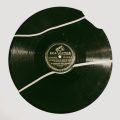So, you have grown tired of your records being inherently limited by the limitations and pitfalls of the normal speed mastering process? Or, perhaps you are simply looking to broaden your knowledge of all things audio fidelity related?
Whatever your reason for being here with us, let me be the first to welcome you along for the ride, for today we attempt to elucidate for you the half speed mastering technique; what it is, why it is, and why it is worth it if you want to hear your favorite records from days of yore anew.
What Is Mastering?
Before we even go on to understand half speed mastering, we must first understand what mastering is at all and go through a rough tour of the process of how are vinyl records made, as this is one of the areas of vinyl recording which can get rather specialized.
The mastering process is one of the last parts of the journey of a recording and for good reason! When a recording has been recorded and produced and mixed, and the artist and producer are as happy as they can be (within the context of any time or budgetary constraints), the record will be mastered. This occurs regardless of whether a recording is going to actually be pressed to vinyl – at least it does in most professional and high fidelity recordings.
Across the board, the mastering process is essentially a way to make the output of a recording as consistent as it can be regardless of what it is being listened through.

Hopefully, you do not need me to remind you that different sets of speakers will have different tonal characteristics, exaggerating different slithers of the frequency spectrum depending on their own allegiances. This is rendered even more dramatic if comparing the resulting sound of a pair of hi-fi speakers and laptop speakers, for example.
Thus, mastering is a way to negate as much as possible the various micro and macroscopic differences that can exist between certain stereo systems, enabling a recording to sound as good as it possibly can on as many sets of speakers as possible.
It can be very easy – and believe me, I have been there – to record a song and listen to it mixed on a pair of hi-fi speakers and think it is the bees knees. This is not, however, how it is going to sound for everyone…
How Does Vinyl Mastering Differ?
Not all who are good at mastering records can fill the shoes of someone who masters for vinyl, how vinyl is made determines a very specific set of allowances and considerations.
The frequency spectrum is significantly encumbered and thus reduced on a vinyl record, so any more extreme frequencies will need to be catered for, lest they send the delicate needle a-flying off of the record.
A mastering engineer working on a vinyl release will need to somehow smooth out these sharper and more extreme changes in frequency to ensure that the needles of the users do not end up doing a whole host of damage.

Similarly, the physicality of the vinyl format does not do it many favors, and can in fact lead to various gradations of distortion and infidelity. The disc shape itself inherently means that grooves nearer to the middle of the disc are smaller, which results in a dip in quality towards the center.
This will need to be considered by the mastering engineer alongside the artist and producer of the record, the former likely prompting the latter to think deeply about which songs they would prefer to be in a higher fidelity etc.
This physicality will also need to be taken into account in a very literal sense, as the amount that a vinyl disc can hold is more than finite. The stylus will eventually reach the end of the side of the vinyl, meaning the listener will either need to either flip the disc and/or pause to reflect on what they have just experienced (or not, if they were indeed zoning out so hard).
What Is Half Speed Mastering then?
So, if we take all we have learned thus far about vinyl mastering, we can very easily answer this question and actually understand what it means!
Half speed mastering is not difficult and yet can yield immensely potent results. Where your average full length album will likely be mastered at 33 1 / 3 rpm, the same album as mastered at half speed will be mastered at 16 2 / 3 rpm.
This is far from some experimental, vaporwave technique to make your record sound more different than it ever has before (a la the slowed + reverb trend that set the internet alight not too long ago).
Rather this technique seeks to take the original masters of a recording and master them at half the speed so as to hone in on any of the details that might otherwise have been missed in the previously faster process.
If a record is cut wrong or without enough care, it simply is not going to sound as good as it could on a user’s home stereo system. If adequate care is taken at the pressing stage when the record is cut, then it stands to reason that any record pressed in such a manner is going to sound as good at home.
And this is precisely the intention of half speed mastering, to pour in the proper and requisite attention and care at the cutting stage so that there can be no real issues with fidelity within the listening experience at the later stages, when consumers are spinning some of their favorite and most beloved records on vinyl for the umpteenth time, some of whom were even there when these albums first saw the public light of day.
What Are the Benefits of Half Speed Mastering?
The benefits of half speed mastering are numerous, though obviously most centric on the aspects of the usual normal speed mastering process that are inadequate and tend to do the record in question a disservice.
Since the grooves that are cut into the record during the pressing process are a literal physical representation of the sound waves that have gone into the production of the music, they ought to be considered with due care and diligence.

Higher frequencies by their very nature produce faster and more transient cycles of sound and vibrations, vibrations that are inherently more difficult to adequately represent through the cutting process, at least in comparison to their longer waved and lower frequency brethren on the sound wave spectrum.
This is one of the reasons that the sound of a record tends be noticeably warmer than its digital counterpart, for the format when pressed in the usual way tends to favour lower frequencies in as much as they are easier to represent in the cutting process.
Half speed mastering enables these faster and more difficult to represent frequencies to be represented far better, offering forth a clearer mid range than would otherwise be possible with traditional normal speed mastering processes.
The more detailed cutting process has inherent benefits to the inner groove distortion as discussed above, significantly reducing the amount of high frequency that can be negated as the needle progresses further towards the inner grooves.
A record that has had the benefit of half speed mastering is likely going to sound superior to its normal speed counterpart, richer and fuller in the high and mid frequencies and smoother at the top end, too. The stereo image and panning will be improved, alongside a whole host of other benefits.
Some Words from the Man Himself: Miles Showell
Miles Showell is an engineer at one of the most prestigious and culturally significant recording studios in the world: Abbey Road. Yes, that made immensely famous by the Beatles is still going on, and is now arguably most popular for their work on half speed mastering some of your favorite music from the past, present, and soon to be future.
‘The most important piece of equipment is probably the disc-cutting lathe. We have a Neumann lathe, which we’ve had modified to be able to run at half speed, because it’s not just a case of pushing a button for it to run slower.
‘All records that are made had an equalisation curve applied to them to reduce hiss and to make it cut more efficiently – it filters out some of the bass. And then your amplifier basically turns down the high frequency and puts all the bass back.
At half the speed, the frequencies are in the wrong place. It’s expecting to roll off the bass in a certain area, but if you’re playing it at lower frequencies because it’s half the speed, then the EQ curve is working in the wrong area – the wrong frequency range. So we had that specially modified circuit built, and some other mods have been made to the lathe to make it work more efficiently at half speed. So that’s probably the most important thing.
‘Generally, I’ve been doing it digitally, which actually has its advantages. People go, “Why can’t you cut from the master tape?” but, actually, I’m doing it through high-resolution digital and making vinyl-specific transfers – so I’m not doing lots of mad compression and limiting to make it loud, like you would do for the “loudness wars” for a CD or download file. It has all sorts of advantages in terms of micro-management of the audio. You can fix the de-essing [reduction of sibilance in the vocals] and all sorts of other little problems.’
Final Tones
So, there you have it! Hopefully, you are feeling somewhat wiser about half speed mastering, how it works and why it is such an important portal through which to reimagine your favorite records, both old and new. Perhaps you are wanting to do some more research on the topic, and maybe you are even ready to take the plunge and purchase one of your favorite records on half speed mastered vinyl – tread carefully through aleatoric financial waters!
FAQs Half Speed Mastering
Is half-speed mastering better?
In essence, yes. The benefits certainly out weigh the drawbacks. There are many inherent flaws in the process of mastering a record at regular speed, flaws which the half speed mastering process attempts to negate. Various aspects of the normal process mean that there is a significantly reduced frequency spectrum, across the whole spectrum, something which the half speed mastering technique attempts to improve, especially in the high to mid range.
What does Half Speed Master mean?
A half speed master is best understood in relation to a normal speed master. Where the latter masters and presses a record at its original speed – usually 33 1 / 3 rpm if an album – the former does so at half the speed. This enables a more measured and deliberate approach, allowing each part of the process and each piece of equipment longer to interpret the record. This results in a more detailed picture of the original recording that negates several of the inherent issues with record pressing, such as an incomplete and biased frequency spectrum, for example.
What speed do you play half speed mastered?
Funnily enough, a record that has been mastered at half speed will usually be played back at the regular speed, i.e. 33 1 / 3 rpm or 45 rpm. This might seem unexpected, but every care is taken to make sure that the mastering process remains a separate entity to the crystalline record produced as a result. That being said, the fact that it is half speed mastered ought to be obvious even to someone who did not previously know that it was so. For one thing, the amount of music on a side will be literally halved as a result of the half speed mastering process, meaning more time spent flipping discs.
Does half speed vinyl sound better?
In essence, yes. There are many inherent flaws in the process of mastering a record at regular speed, flaws which the half speed mastering process attempts to negate. Various aspects of the normal process mean that there is a significantly reduced frequency spectrum, across the whole spectrum, something which the half speed mastering technique attempts to improve, especially in the high to mid range. Thus, half speed mastering attempts to and succeeds at broadening the frequency output of a record, especially radically in comparison the traditional normal speed mastering process.





